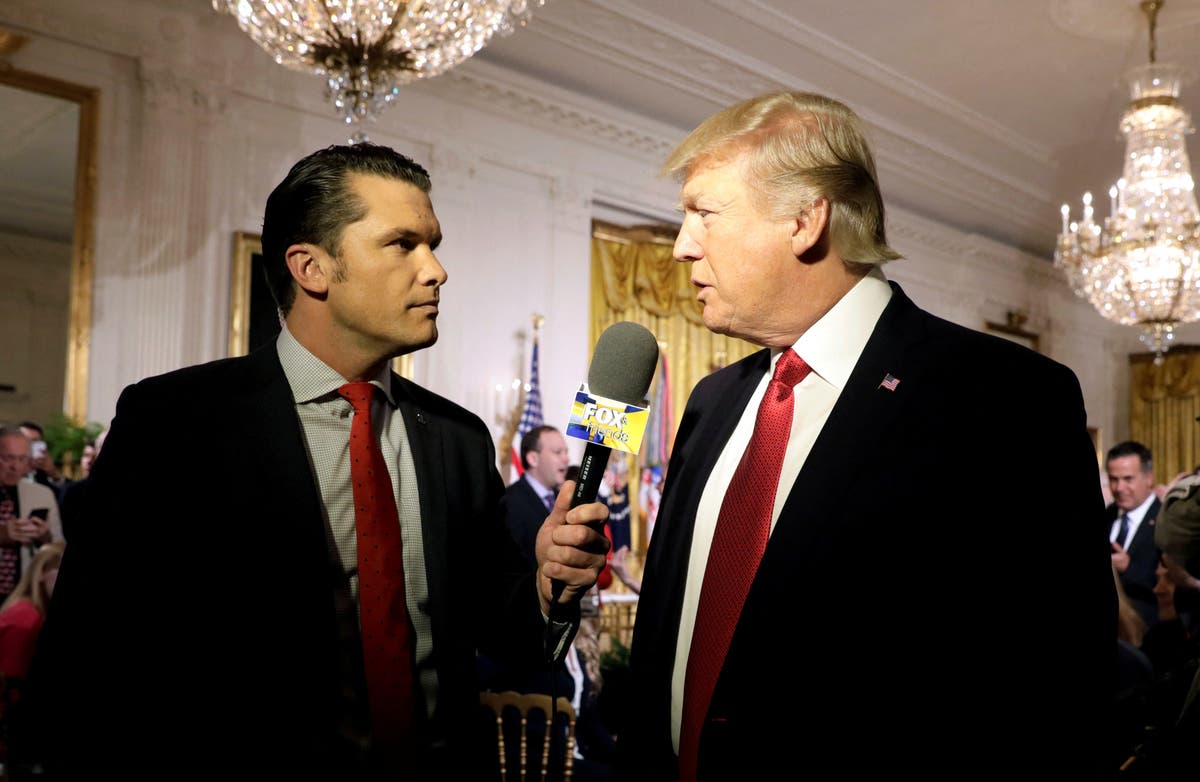Bussiness
TOI explains: What’s behind Trump’s threat of 100% tariff on Brics? – Times of India

On Nov 30, US President-elect Donald Trump issued this threat on his social media TruthSocial: “The idea that the BRICS Countries are trying to move away from the Dollar, while we standby and watch is OVER. We require a commitment from these Countries that they will neither create a new BRICS currency, nor back any other currency to replace the mighty US Dollar or, they will face 100% tariffs, and should expect to say goodbye to selling into the wonderful US Economy.”
India is a founding member of BRICS that now has nine member states. US dollar has been the world’s most used currency since the end of the second World War, before which UK pound was the most in use. Most countries use dollar for two primary purposes: Currency to hold foreign exchange reserves and currency for trade and other global transactions. The chart below shows dollar’s dominant, but declining, position as preferred reserve currency
What is reserve currency?
A reserve currency is a foreign currency that central banks hold as part of its country’s formal foreign exchange reserves. By buying and selling currencies on the open market, a central bank, such as RBI, can influence the value of its country’s currency (rupee), which can provide stability and maintain investor confidence. Most countries want to hold their reserves in a currency with large and open financial markets, since they want to be sure that they can access their reserves when they need. Central banks often hold currency in the form of govt bonds, such as US treasuries. The US treasury market remains by far the world’s largest and most liquid – the easiest to buy into and sell out of – bond market.
In addition to accounting for majority of reserves, dollar remains the currency of choice for international trade. Major commodities, such as oil, are primarily bought and sold using US dollar, and some major economies, including Saudi Arabia, still peg their currencies to the dollar.
High dollar demand enables US to borrow money at a lower cost, since higher demand for a govt’s bonds means it doesn’t have to pay as much interest to entice buyers, and helps to keep cost of its huge external debt down. Some experts say this benefit is modest, pointing to the fact that other developed countries are able to borrow at similarly low rates. Former Federal Reserve chairman Ben Bernanke had argued that the US’s falling share of the global economy and rise of other currencies, such as euro and yen, have eroded the US advantage.
Sanctions, weaponising the dollar
Dollar’s centrality to the system of global payments also increases the power of US financial sanctions. Almost all trade done in US dollar, even trade among other countries, can be subject to US sanctions, because they are handled by so-called correspondent banks with accounts at the Federal Reserve. By cutting off the ability to transact in dollar, the US can make it difficult for those it blacklists to do business. For example, in the wake of Russian invasion of Ukraine in 2022, US sanctions cut Russia off from the dollar, freezing $300 billion in Russian central bank assets and triggering a default on the country’s sovereign debt. If use of dollar falls, so will be the effectiveness of US sanctions.
Ajay Srivastava, founder of Global Trade Research Initiative, says: “The US has a history of leveraging its influence over global financial systems, such as the SWIFT network, to impose unilateral sanctions. SWIFT – the Society for Worldwide Interbank Financial Telecommunication – is essential for secure and standardised international financial transactions. By blocking countries like Russia and Iran from accessing SWIFT, the US has effectively weaponised the global financial infrastructure, forcing other nations to find alternative payment mechanisms to continue legitimate trade.
“Trump’s threat is unrealistic. Tariffs of this scale would harm US consumers by raising domestic prices, disrupt global trade, and risk retaliation from key trading partners. A global shift away from dollar is a complex process driven by economic diversification, not easily deterred by threats,” Srivastava adds.
Incentive to de-dollarise
Though dollar still dominates, most economists say its role in the international financial system should not be taken for granted, because there are economic and geopolitical incentives for other countries to ‘de-dollarise’. At an April 2023 summit of BRICS countries, Brazilian President Luiz Inacio Lula da Silva asked, “Why can’t we do trade based on our own currencies?”
After the US sanctions India’s has been buying oil from Russia without using dollar. China too has done the same. But, the idea of developing a BRICS currency hasn’t yet taken shape largely due to structural challenges in member countries, including a lack of robust central banks and monetary policies. The share of Chinese Renminbi in global reserves has risen by three times – 1% to 3% – since 2016. This factor may be the primary reason behind Trump’s outburst.
Cost of highly valued dollar
A highly valued dollar is not without a cost to US. While it makes imports into US cheaper, it makes US exports expensive, which can hurt its industries selling goods abroad and potentially leads to job losses. US is also harmed by currency manipulation – when another country holds down value of its currency to maintain a large trade surplus. If a country keeps the value of its currency artificially low by accumulating dollar reserves, its exports will become more competitive, while US exports will become comparatively more expensive. China has historically been among the worst offenders.
While dollar will not be overtaken as the world’s leading reserve currency anytime soon, it will slowly come to share influence with other currencies. The trend will be accelerated by the aggressive use of US sanctions and kind of threats Trump issued on Saturday.









